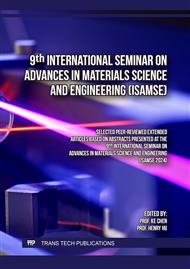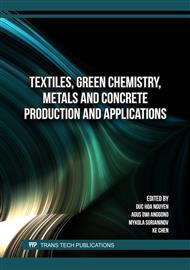p.13
p.21
p.29
p.39
p.49
p.55
p.63
p.71
p.79
Construction of a Binary Organocatalytic System Based on Urea-Based Hydrogen Bond Donors and Polyether Ionic Liquids and its Application to CO2 Cycloaddition Reactions
Abstract:
To alleviate the environmental problems caused by the excessive emission of CO2, this study designed and synthesized a binary organocatalytic system based on urea-based hydrogen bond donors and polyether ionic liquids based on a cycloaddition reaction that converts CO2 and small-molecule epoxides into cyclic carbonates with high industrial application value. The binary system is based on a polyether ionic liquid, introducing an organic base (to trap and activate CO2), hydrogen bond donor (to activate the epoxide), and nucleophilic reagent unit (to help open the ring of epoxides), with a variety of active sites. In this paper, the effects of the hydrogen bond donor as well as polyether ionic liquids structure on the activity of the binary system were investigated, the optimal HBD/Lewis base binary catalytic system was established, and the cycle life of this binary system was tested.
Info:
Periodical:
Pages:
49-54
Citation:
Online since:
December 2024
Authors:
Price:
Сopyright:
© 2024 Trans Tech Publications Ltd. All Rights Reserved
Share:
Citation:



